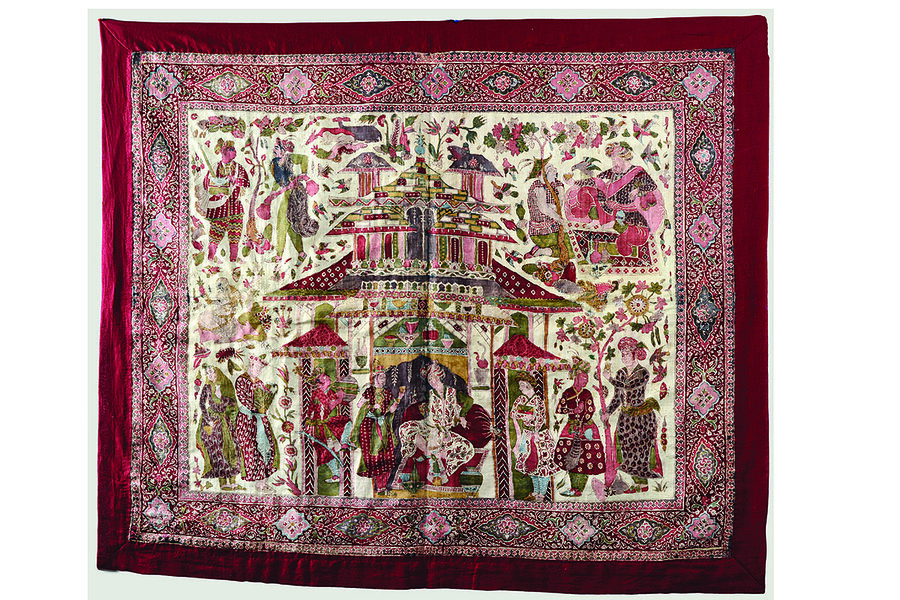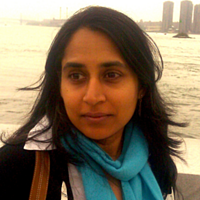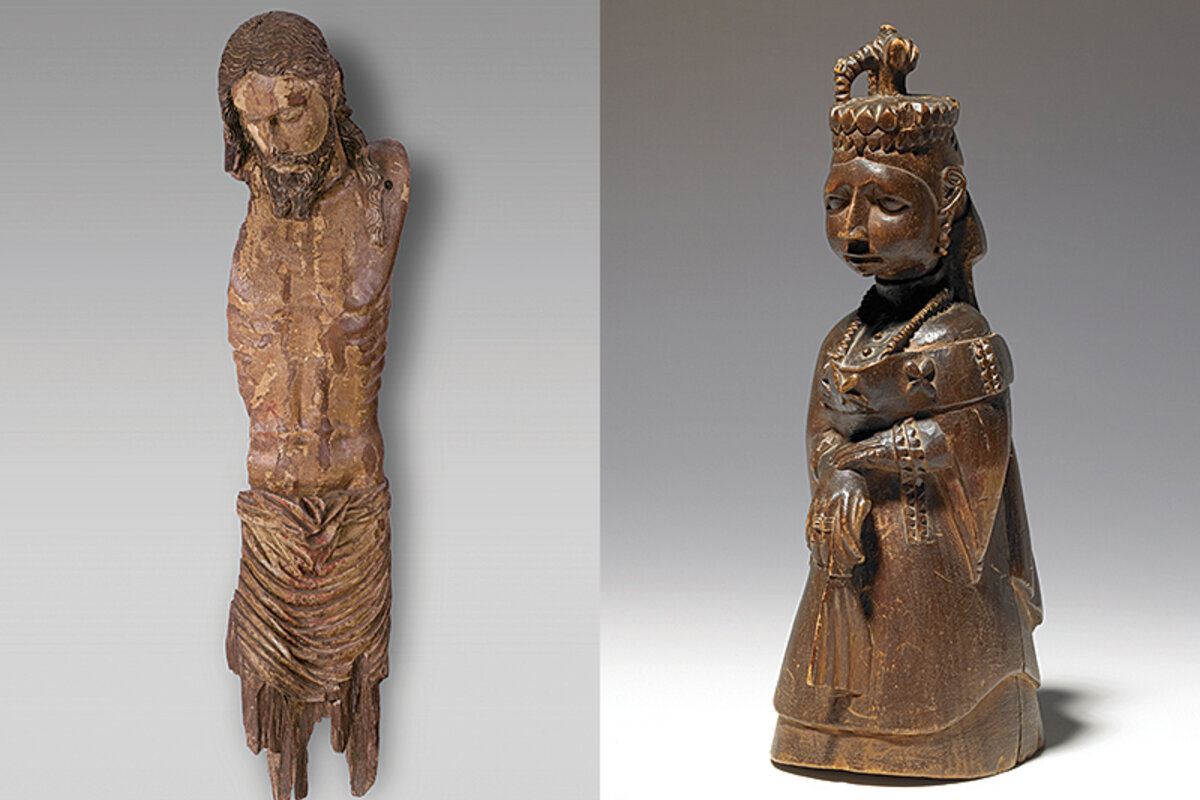Mumbai museum challenges Indians' self image
Loading...
| Mumbai, India
In a dimly lit gallery at Mumbai’s premier museum, visitors admire a 17th-century cloth painting depicting characters from a Muslim court in south-central India. An Ottoman trader feeds a bird; a Central Asian merchant holds a Chinese vase; and in one corner, a yogi sitting cross-legged on a deer-skin contemplates a wondrous new object: a pineapple brought to India from the New World by the Portuguese.
Such intriguing juxtapositions, unexpected stories, and global connections form the essence of an ambitious new exhibition that recounts India’s history and its engagement with the world through 200 objects. In doing so, it offers a counterpoint to rising intolerance and nationalism in India and elsewhere.
Its purpose is “to present India’s glorious past through iconic objects ... while allowing people to become partners in a world narrative,” says Sabyasachi Mukherjee, director of the Chhatrapati Shivaji Maharaj museum which is presenting the exhibition “India and the World: a History in Nine Stories.”
It seems to have worked. “When you read textbooks, you don't see these connections,” says Rukhsana Tabassum, a children’s filmmaker visiting the new show one recent afternoon for the second time.
The exhibition helped her see history as a whole rather than in fragments, she adds. “We see the global context, how people were doing similar things in different places ... [and] how we’ve been interacting with the world for so long.”
Celebrating the 70th anniversary of India’s independence, the show chronicles nine important moments in the subcontinent’s history, from the Stone Age to the post-independence period.
The exhibition is a collaboration with the British Museum in London; roughly half the artifacts were sourced from around India and the other half from the British Museum’s global collection of treasures. Items are paired in a dialogue that speaks to the present moment of political strife.
“The show highlights what unites people, what is at the heart of human development: exchange,” British Museum director Hartwig Fischer told journalists last week. “Yes, there were obstacles, differences, conflicts, but this exchange kept going on. The history of humankind is that of openness. And it’s important to recall that today.”
One of the items on show is especially resonant in the context of racist attacks on Africans earlier this year in New Delhi. It is a portrait of Malik Ambar, an Ethiopian who was brought to India in the 16th century as a slave and rose to become a military leader.
More than 'a Hindu nation'?
The exhibition comes at a time when Indians seem increasingly polarized over questions of history, identity, and religion. In the past year, conflicts have erupted over the use of Hindi as a national language, the consumption of beef, and even the status of the iconic Taj Mahal.
These arguments have flared up since the Hindu nationalist Bharatiya Janata Party (BJP), led by Prime Minister Narendra Modi, took office in 2014, giving his right-wing allies greater influence in Indian affairs.
Many of those allies see India as a fundamentally Hindu nation beset by foreign cultures; one BJP leader caused a furor in June when he said that the Taj Mahal – an early 17th-century Muslim mausoleum built by Mughal Emperor Shah Jahan that is the country’s top tourist attraction – did not represent “Indian culture.”
Such views are more than a matter of academic debate. Mobs of “cow vigilantes” have attacked Muslims several times in the past year for eating beef or allegedly slaughtering cows, animals that Hindus consider holy. In April, a mob beat to death a Muslim farmer in north India who was transporting cows.
Last week, paramilitary troops were called in to ensure there was no violence during protests at the birth anniversary celebrations of Tipu Sultan, an 18th-century Muslim ruler in the southern state of Karnataka. The sultan has been hailed for battling the British – but is reviled by the BJP for having destroyed Hindu temples.
“What is going on is a resort to instrumental uses of history in the service of religious majoritarianism,” says Sugata Bose, a member of parliament and professor of history at Harvard University. But there is also a global trend toward nationalism, he notes.
That has not escaped the notice of James Hill, head of research at the British Museum and a co-curator of the Mumbai exhibition.
The first curatorial meeting was held the day after Britain voted to leave the European Union, he recalls. “I was at Heathrow (airport) to catch a flight to Mumbai when I heard.” Curators everywhere must choose which story to tell, he says. “Connection is the human story ... and you have to tell that story in Britain as much as here.”
Gods on the move
The exhibition offers a vision of an India as a cosmopolitan crossroads culture, at the center of ancient trade networks. The objects on view include a splendid pillar from India’s Mauryan Empire (326-180 BC) decorated with Persian-style rosettes and Greek motifs, indicating contact with those civilizations, and seals from the Indus Valley civilization, located in what is now India, that were found in distant Mesopotamia.
Co-curator Naman Ahuja says he sought to find a way for Indians to feel “self-pride” while respecting others. “Because we are a composite people,” he insists. “And this exhibition shows that at every step of the way, India has been a creation of multiple forces. There is no such thing as a singular Indian identity.”
An especially thought-provoking display is the juxtaposition of a 16th century wooden Christ next to the Hindu god Ganesh; in a subversion of viewer expectations, it is the Christian icon that was made in India and the Ganesha that turns out to be from another country, Indonesia.
“Gods, like people, have always been on the move,” says Ahuja, “and the marker of your identity, whether that’s religion or cuisine, may be something that’s not necessarily born in your land but may have come from somewhere else.”
One way to help people to understand their culture in relation to others, says museum director Mukherjee, is simply to provide an opportunity to see the cultural treasures tucked away in the British Museum or in other collections around India. The Mumbai museum receives thousands of visitors from smaller towns and villages, including many who may never visit London’s museums, he notes.
One recent afternoon, many of the visitors seemed overwhelmed. But others were moved.
Vinod Mehra, from one of Mumbai’s satellite towns, said he was proud to see India’s ancient empires on the same map as the great Greek and Roman ones. He and his wife, Geetha, were also impressed by the gallery that explains humankind’s African origins.
“We all come from the same place,” said Geetha, “so what are we fighting for?”







